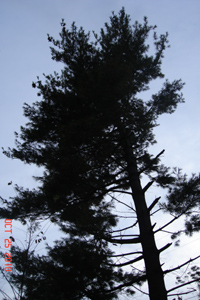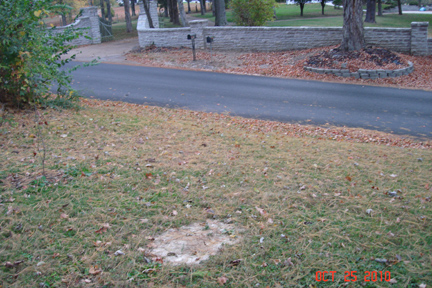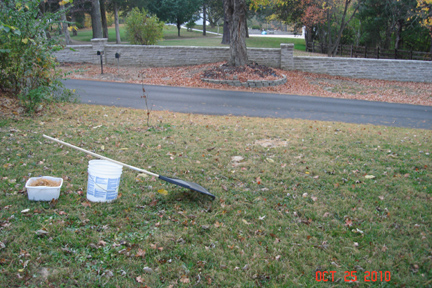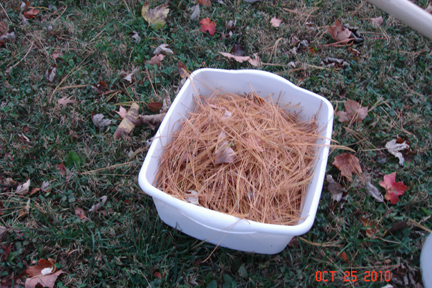Collecting Bee Smoker Fuel
Once the cooler fall weather approaches, and the hives have been harvested and prepared for overwintering, there is usually a lot of down time for the beekeeper.
 Most spend the late fall and winter months reading back issues of ABJ, cleaning and building frames and other woodenware in preparation for the following springtime.
Most spend the late fall and winter months reading back issues of ABJ, cleaning and building frames and other woodenware in preparation for the following springtime.Today as I was walking through our back yard, I noticed on of our pine trees had really started to turn from green to brown, and had dropped a good portion of it's needles all over the yard.
One of the most common sources of fuel for bee smokers is dried pine needles.
A smoker is used to calm the bees just prior and during an inspection. Below is a picture of my Dadant smoker that I bought from Ebay.

While there are several currently debated reasons the bees calm after being smoked, one of the most popular explanations is that the bees fear a loss of the hive due to a fire, so they will climb down into the hive and engorge themselves in honey in response to possible hive abandonment due to a fire.
The bee smoker should, therefore, produce a cool smoke as only the scent of the smoke is required, and not any actual heat.
The fuel in the smoker smolders slowly because there is only a small amount of oxygen inside, until a squeeze of the bellows provides a blast of fresh air. In this way the fuel is used more sparingly than in an open firebox, and one load of fuel may last for several hours, or even days (if it is extinguished and rekindled again later).
Wanting to take advantage of the free smoker fuel laying all over the yard, I grabbed my buckets and rake and began the work of collecting the pine needles, being careful not to rake up the leaves too.
In the picture below you can see how the yard has gone from bright green to a golden yellow color from all the needles.


Within just a few minutes I had the bucket shown below full of needles, and within 20 more minutes, I had several five gallon buckets of dried needles stored up for next year.

I'll place the lids over the buckets, and store them in the dry garage until they're needed in the spring.
Comments For This Post: (0) Be The First! | Post Your Comments! Hide The Comment Form